It's Haggis Time. Again.
It's Tuesday. It's the 25th January. It's Crackerjack!
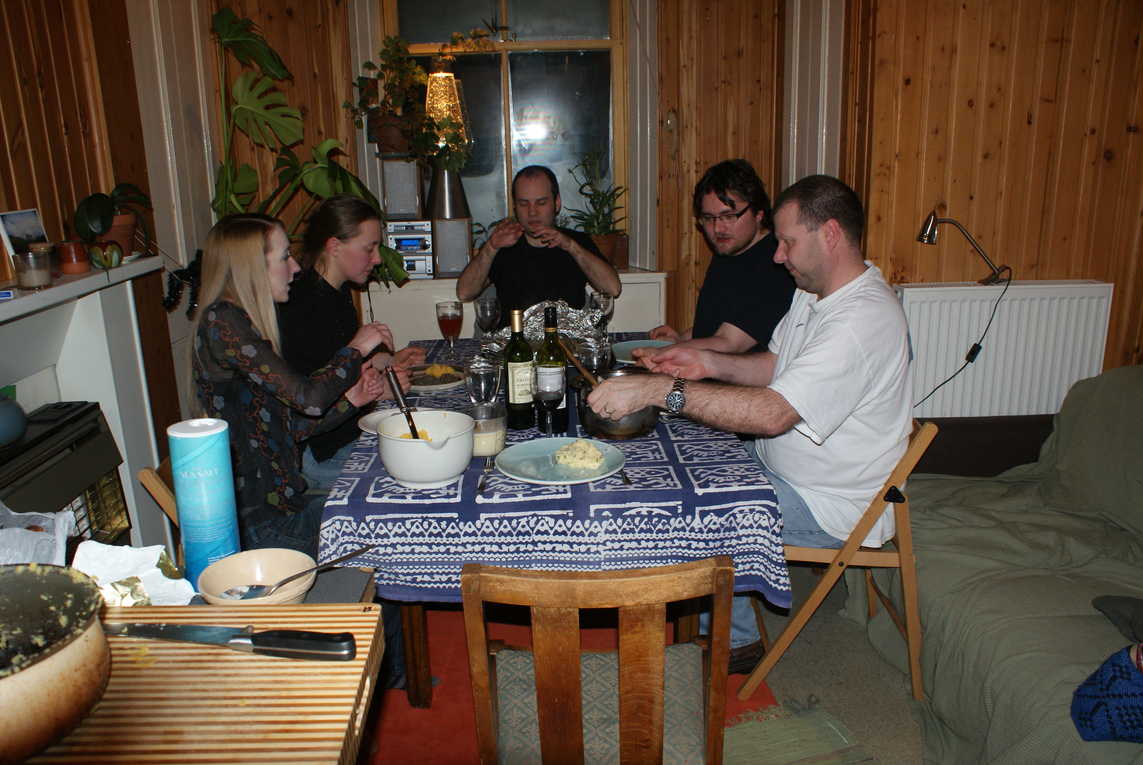
OK, it's not Crackerjack, but it is Burn's Night, so time to wheel out the old Haggis recipe for one more spin.
It seems to be getting harder and harder to find all the bits of sheep you need to make the haggis these days.
This time I had to visit three different butchers before I had everything - no one seems willing or able to sell a complete pluck any more, then I thought the liver I got first was a bit skimpy so went back out for more, and then I had to fight to get hold of any lungs.
On the plus side though, whilst butcher hopping I did score a very nice extra lamb's heart for my aprés offal dinner that night.
Part of the problem with getting all the bits from different butchers (never mind different sheep) is that the quantities end up a bit unbalanced, and vary every time you make this stuff.
This time I had a huge kidney that looked like it might have come from a camel, and that extra tiny liver that I didn't really need.
Which is how come I ended up with a simply unbelievable quantity that was too big for any mixing bowl I possess this time around, and kept me in haggis for the next two weeks.
However I had an interesting discussion with my lung guy about whether he thought it was worth bothering with them at all: I told him how after I'd finished picking all the capillaries out there never seemed to be much left to eat, and he told me that he didn't have that trouble at all after boiling the lungs for 2 hours.
I thought that sounded a bit excessive - considering it might be nice to have some flavour left in the buggers, but I think he was probably right - I boiled mine for an hour this time (double that from last time) and there certainly was a great deal less picking out of capillary to be done. Just the main big fat ones really, and they pulled out a lot easier too.
So this time I simmered the hearts, liver and kidneys for about half an hour first, then took everything out and put the lungs into the same pan for an hour.
This left some offaly nice :) stock after straining which I used to cook the barley and to moisten the heart and lungs when I whizzed them up in the food processor to make mousse (which my food processor did not enjoy - indicating it's unhappiness with clouds of smoke). And in fact this time, I used up all of my cooking water. Probably because I didn't need so much of it cooking the lungs separately.
Though I got the spices better balanced than last time (frying up a sample to taste as you go saves the day), on the whole I didn't like the flavour as much, maybe because there was too much kidney?
Although the earliest Haggis-type recipes like the medieval For hagese, published in Liber Cure Cocorum in (probably) Lancashire around 1430 A.D. are happy to use kidney (and in fact, that recipe doesn't seem to have any liver), later references such as Gervase Markham's mention of haggas or haggus in his 1615 publication The English Huswife often seem to skip the kidneys, and it now doesn't seem to be all that common an ingredient.
Not that it tasted bad or anything - just a bit stronger than I like.
As usual I did my best not to over-pack the ox socks, firmly packing the end of the bag, then rolling the haggis back out again along the whole length so it was only half-stuffed, but as usual I failed, and once again my Haggis did not survive the boiling process un-split.
It's a real shame too - it made it right up to the third hour before finally going, but the trouble is when they split it happens in a real gush, so you don't have very long to rescue the situation and wrap them in tin foil. If you see the warning sign of a thinning patch, like a ladder in a stocking, or an actual hole, then don't hang about - wrap the haggis immediately in aluminium foil.
So back to the drawing board on my packing skills - I really must stop worrying about under-filling the casings no matter how limp they look, since the stuffing swells massively during cooking, and maybe I should think about double-wrapping the haggises in an extra ox cecum?
I actually remembered to weigh stuff as I worked this time so at least I have an idea of what went in - I think next time I would use a bit less liver maybe 2lb, and a lot less kidney - say 8 oz?
Oh, and this year's secret ingredient? Armagnac. Though I did wonder about adding a touch of mint. Those medieval recipes liked to use quite a lot of herbs, which seems like an idea worth resurrecting.

OK, it's not Crackerjack, but it is Burn's Night, so time to wheel out the old Haggis recipe for one more spin.
It seems to be getting harder and harder to find all the bits of sheep you need to make the haggis these days.
This time I had to visit three different butchers before I had everything - no one seems willing or able to sell a complete pluck any more, then I thought the liver I got first was a bit skimpy so went back out for more, and then I had to fight to get hold of any lungs.
On the plus side though, whilst butcher hopping I did score a very nice extra lamb's heart for my aprés offal dinner that night.
Part of the problem with getting all the bits from different butchers (never mind different sheep) is that the quantities end up a bit unbalanced, and vary every time you make this stuff.
This time I had a huge kidney that looked like it might have come from a camel, and that extra tiny liver that I didn't really need.
Which is how come I ended up with a simply unbelievable quantity that was too big for any mixing bowl I possess this time around, and kept me in haggis for the next two weeks.
However I had an interesting discussion with my lung guy about whether he thought it was worth bothering with them at all: I told him how after I'd finished picking all the capillaries out there never seemed to be much left to eat, and he told me that he didn't have that trouble at all after boiling the lungs for 2 hours.
I thought that sounded a bit excessive - considering it might be nice to have some flavour left in the buggers, but I think he was probably right - I boiled mine for an hour this time (double that from last time) and there certainly was a great deal less picking out of capillary to be done. Just the main big fat ones really, and they pulled out a lot easier too.
So this time I simmered the hearts, liver and kidneys for about half an hour first, then took everything out and put the lungs into the same pan for an hour.
This left some offaly nice :) stock after straining which I used to cook the barley and to moisten the heart and lungs when I whizzed them up in the food processor to make mousse (which my food processor did not enjoy - indicating it's unhappiness with clouds of smoke). And in fact this time, I used up all of my cooking water. Probably because I didn't need so much of it cooking the lungs separately.
Though I got the spices better balanced than last time (frying up a sample to taste as you go saves the day), on the whole I didn't like the flavour as much, maybe because there was too much kidney?
Although the earliest Haggis-type recipes like the medieval For hagese, published in Liber Cure Cocorum in (probably) Lancashire around 1430 A.D. are happy to use kidney (and in fact, that recipe doesn't seem to have any liver), later references such as Gervase Markham's mention of haggas or haggus in his 1615 publication The English Huswife often seem to skip the kidneys, and it now doesn't seem to be all that common an ingredient.
Not that it tasted bad or anything - just a bit stronger than I like.
As usual I did my best not to over-pack the ox socks, firmly packing the end of the bag, then rolling the haggis back out again along the whole length so it was only half-stuffed, but as usual I failed, and once again my Haggis did not survive the boiling process un-split.
It's a real shame too - it made it right up to the third hour before finally going, but the trouble is when they split it happens in a real gush, so you don't have very long to rescue the situation and wrap them in tin foil. If you see the warning sign of a thinning patch, like a ladder in a stocking, or an actual hole, then don't hang about - wrap the haggis immediately in aluminium foil.
So back to the drawing board on my packing skills - I really must stop worrying about under-filling the casings no matter how limp they look, since the stuffing swells massively during cooking, and maybe I should think about double-wrapping the haggises in an extra ox cecum?
I actually remembered to weigh stuff as I worked this time so at least I have an idea of what went in - I think next time I would use a bit less liver maybe 2lb, and a lot less kidney - say 8 oz?
Oh, and this year's secret ingredient? Armagnac. Though I did wonder about adding a touch of mint. Those medieval recipes liked to use quite a lot of herbs, which seems like an idea worth resurrecting.
Haggis III
main meat
Feeds an armyIngredients
- 9oz/260g heart
- 2lb 10 oz/1120g liver of which one single liver weighed 1lb/465g
- 1lb 5oz/590g kidney
- 1lb/450g kidney suet
- 1 set of lungs
- 2 cups pinhead oatmeal, which is ¾lb toasted
- 1 cup pearl barley
- 2 medium onions, chopped - about 2 cups
- ½ head garlic, minced
- a glass Armagnac
- spices as for Haggis I
- one or two ox ceca/bungs
Cook the heart, liver and kidneys for 30 mins, (picking out any smaller pieces if they are cooked through quicker),
then take them out to cool and cook the lights (lungs) for 1 hour in the same stock.
You should probably skim off the brown foam which inevitably bubbles up during this process.
Now:
Now you're ready to stuff the cecum - fill one half of the sock, then squeeze out any air, tie off the very end then roll the mixture back out so it half-fills the entire length. I'll definitely try double-bagging the sock next time!
I hung my haggis in a cool place for a day to dry off the somewhat spongey surface before wrapping it in cheesecloth and leaving in the fridge until it was needed, but maybe the hanging stage is unnecessary?
The haggis keeps just fine for at least a week this way.
Since you have just created a haggis far too large to fit in any of your existing pots, you will need to buy an extra-large oven tray to cook it in.
Just cover the haggis with warm water, put the oven-tray over a low heat and cover with tin foil.
Simmer for 3 hours until it is swollen and ready to eat - make sure you keep a close eye on it, especially towards the end, be prepared to wrap it in tin foil at the slightest sign of bursting.
Serve with neeps and tatties.
You should probably skim off the brown foam which inevitably bubbles up during this process.
Now:
- hand-grate the liver, removing any tubules
- hand-grate the larger pieces of kidney
- hand-grate the suet
- dry pan-toast the oatmeal
- cook the barley in twice its volume of offal stock
- purée the lungs, heart and leftover kidney, removing any tubules
- chop the onion, moderately finely
- mince the garlic
Now you're ready to stuff the cecum - fill one half of the sock, then squeeze out any air, tie off the very end then roll the mixture back out so it half-fills the entire length. I'll definitely try double-bagging the sock next time!
I hung my haggis in a cool place for a day to dry off the somewhat spongey surface before wrapping it in cheesecloth and leaving in the fridge until it was needed, but maybe the hanging stage is unnecessary?
The haggis keeps just fine for at least a week this way.
Since you have just created a haggis far too large to fit in any of your existing pots, you will need to buy an extra-large oven tray to cook it in.
Just cover the haggis with warm water, put the oven-tray over a low heat and cover with tin foil.
Simmer for 3 hours until it is swollen and ready to eat - make sure you keep a close eye on it, especially towards the end, be prepared to wrap it in tin foil at the slightest sign of bursting.
Serve with neeps and tatties.
Edinburgh Fog
dessert veg
Apparently the original recipe used ratafia biscuits,
but there don't seem to be any of those around, and today's macaroons with their coconut and chocolate coating
seem like a completely different kettle of cookies, so I opted to use Amaretti biscuits instead.
Perhaps, though, they are not as moist as ratafias would have been?
The same website does have a recipe for them, but I couldn't be bothered to make them. Maybe next time.
The original also seems to have used Drambuie and bitter almond essence to flavour the fog, but I used Amaretto liqueur instead.
Perhaps, though, they are not as moist as ratafias would have been?
The same website does have a recipe for them, but I couldn't be bothered to make them. Maybe next time.
The original also seems to have used Drambuie and bitter almond essence to flavour the fog, but I used Amaretto liqueur instead.
Makes enough for 4 desserts
Ingredients
- Half pint double cream
- around one ounce castor sugar
- Two ounces Amaretti, crushed or more traditionally small macaroon biscuits
- Amaretto liqueur or more traditionally almond essence and Drambuie
- One ounce flaked almonds, toasted.
- 3 or 4 raspberries per person, and some grated lemon peel to taste.
Whip the cream until it starts to stiffen, then add sugar to taste.
Crush the amaretti biscuits I pounded them through a colander with a rolling pin so they weren't too finely crushed and mix well with the cream.
Add a splash of Amaretto (or almond essence and Dramubuie, rum, whisky, brandy, or whatever) to taste.
Toast the almonds in a dry frying pan, put a few raspberries at the bottom of a glass or small serving dish, drizzle with Amaretto and a few gratings of lemon peel and pile on a heap of the fog.
Chill well and serve.
Crush the amaretti biscuits I pounded them through a colander with a rolling pin so they weren't too finely crushed and mix well with the cream.
Add a splash of Amaretto (or almond essence and Dramubuie, rum, whisky, brandy, or whatever) to taste.
Toast the almonds in a dry frying pan, put a few raspberries at the bottom of a glass or small serving dish, drizzle with Amaretto and a few gratings of lemon peel and pile on a heap of the fog.
Chill well and serve.
To be honest, I didn't like it much.
It's a bit greasy and has a rather cloying flavour. And I'm not sure it would have been any better with Drambuie either. Maybe it would be worth trying with a modern macaroon though, the amaretti vanished into the fog a bit.
One problem was that the fog was really dense, and would probably have benefitted from being whipped slightly less just to the point of it no longer pouring perhaps. Despite the original recipe instructing you to whip it until stiff.
It's a bit greasy and has a rather cloying flavour. And I'm not sure it would have been any better with Drambuie either. Maybe it would be worth trying with a modern macaroon though, the amaretti vanished into the fog a bit.
One problem was that the fog was really dense, and would probably have benefitted from being whipped slightly less just to the point of it no longer pouring perhaps. Despite the original recipe instructing you to whip it until stiff.
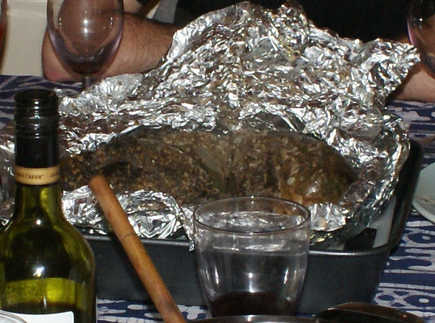
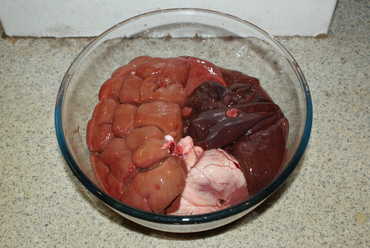
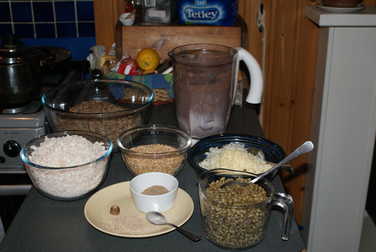
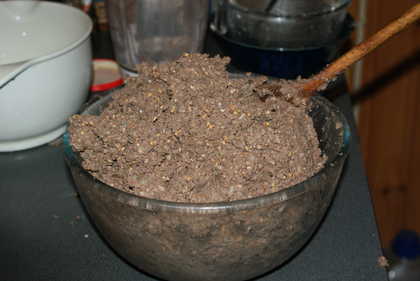
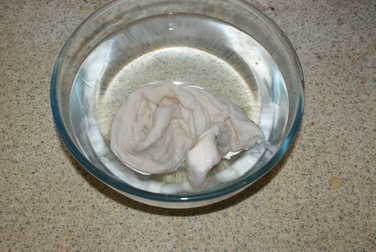
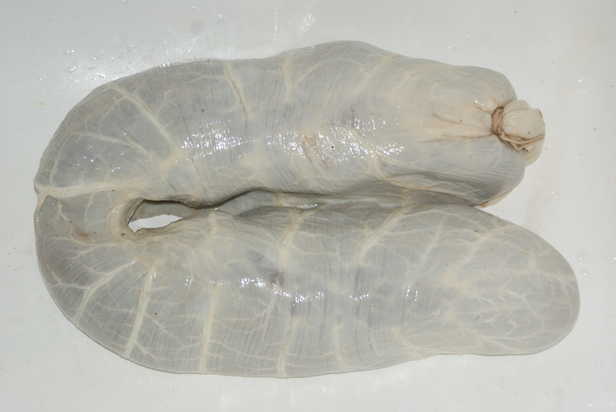
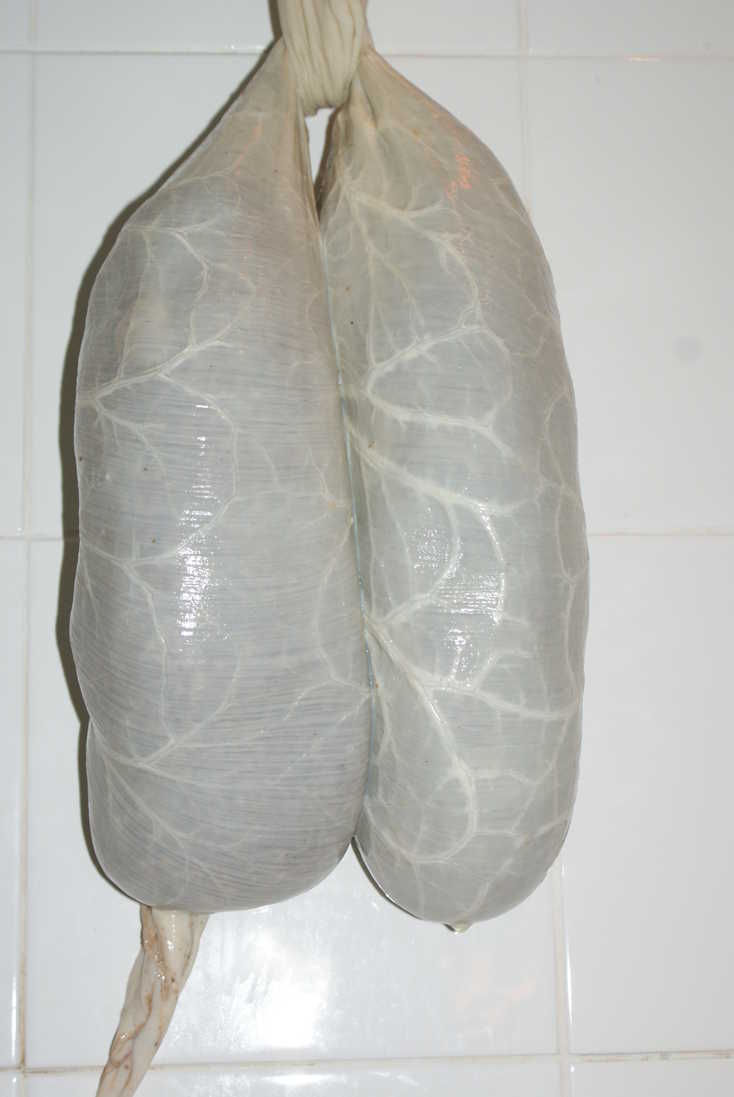
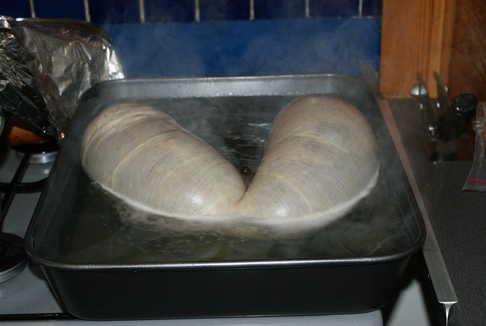
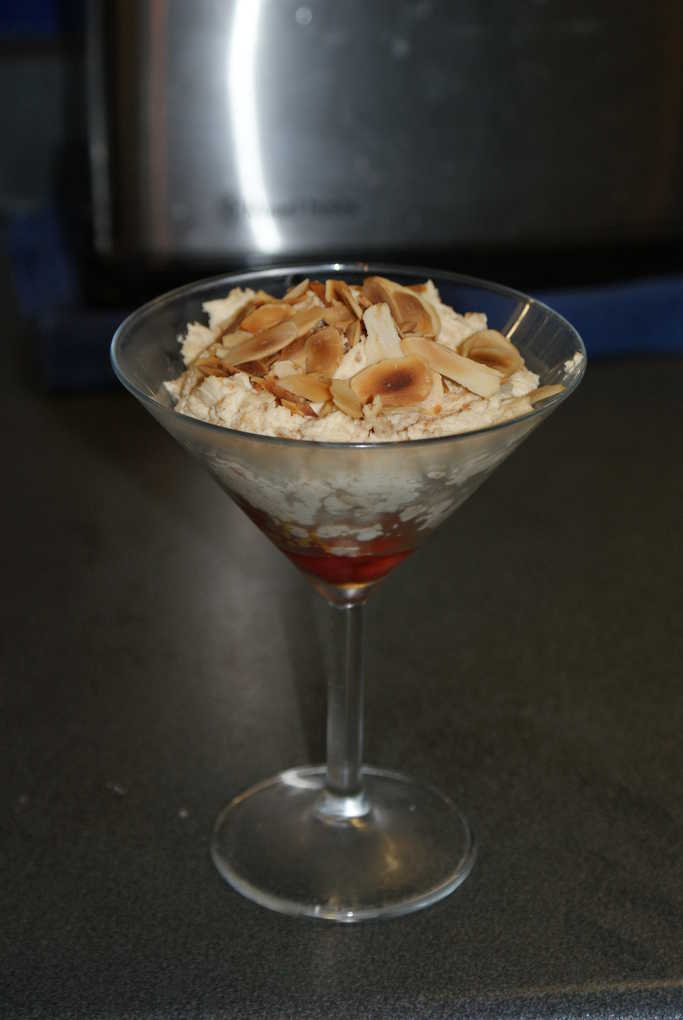
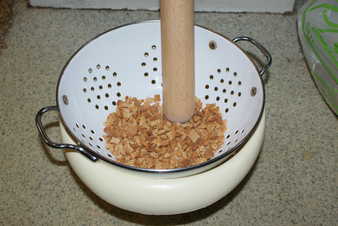
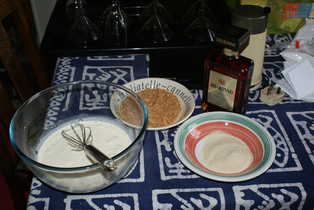
We've been here before. You know it's good!